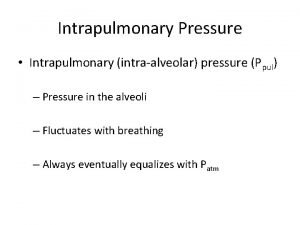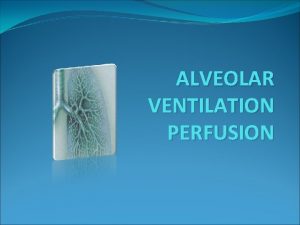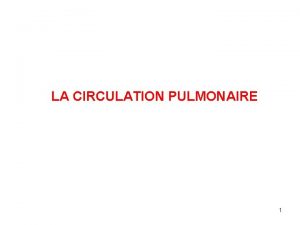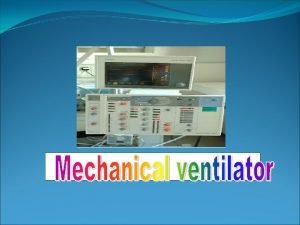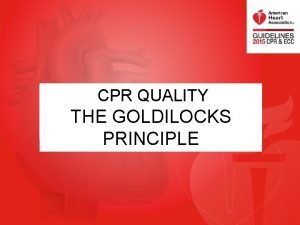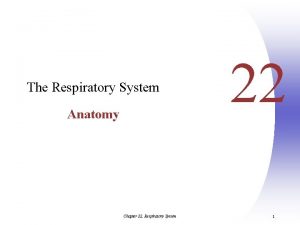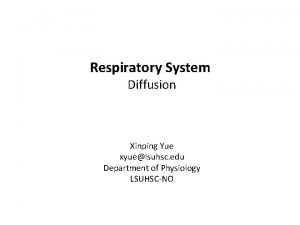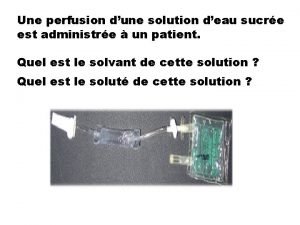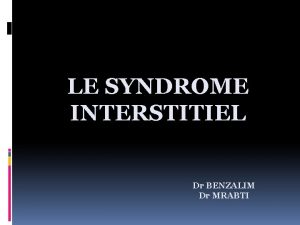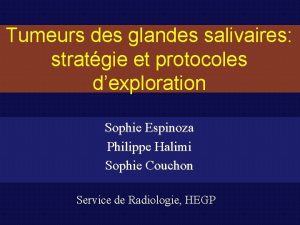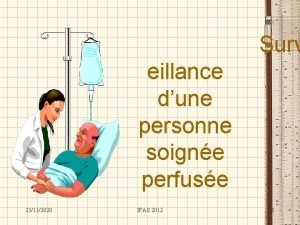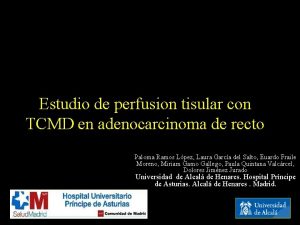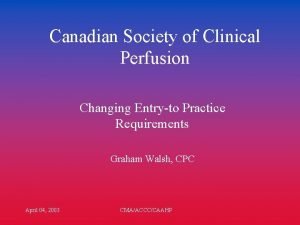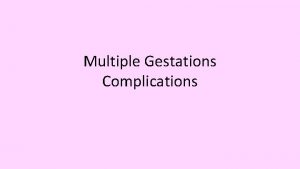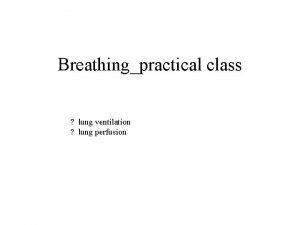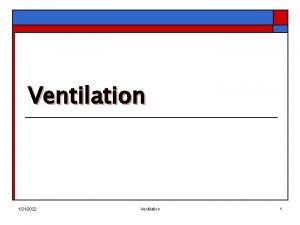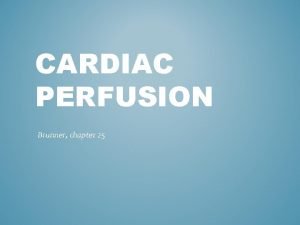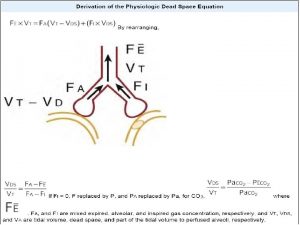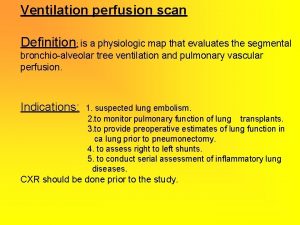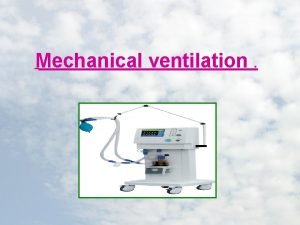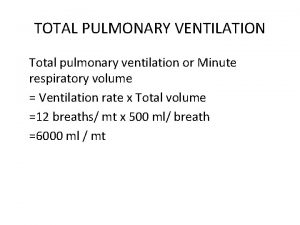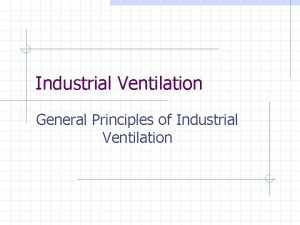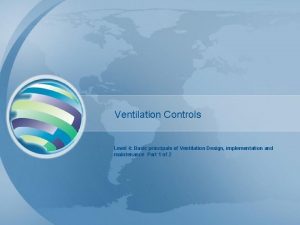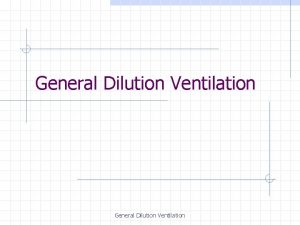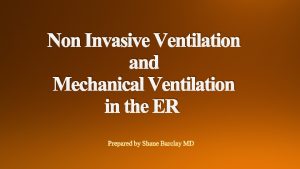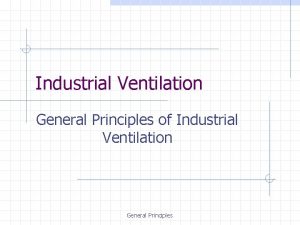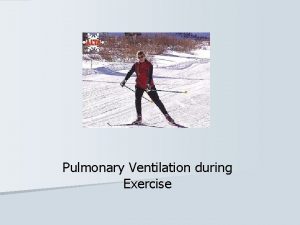Ventilation Perfusion Relationships The material intended to supplement





![Definitions • Anatomic Shunt: – Normal: 2 -5% of the [venous] Cardiac output returns Definitions • Anatomic Shunt: – Normal: 2 -5% of the [venous] Cardiac output returns](https://slidetodoc.com/presentation_image_h2/aeb0471dcef42b84cbdb242f78919fe5/image-6.jpg)
















- Slides: 22

Ventilation Perfusion Relationships The material intended to supplement reading from Chapter 8; Cardiopulmonary and Physiology, Des Jardins

Ideal V/Q Ratio: . Ve = (VT)(f) = 4 to 6 L/m =. 8 . Q = Cardiac Output = 5 to 7 L/m

Low V/Q Ratio: Shunt Unit Obstruction reduces ventilation to unit. . Ve = 2 L/m =. 4 . Q = 5 to 7 L/m

Shunt Units • Atelectasis • Airway obstruction – Bronchial smooth muscle constriction – Sputum – Fluid consolidation

Shunt • Also called “Intrapulmonary Shunt” this is the most common condition requiring oxygen therapy. • Not to be confused with “Anatomic Shunt”
![Definitions Anatomic Shunt Normal 2 5 of the venous Cardiac output returns Definitions • Anatomic Shunt: – Normal: 2 -5% of the [venous] Cardiac output returns](https://slidetodoc.com/presentation_image_h2/aeb0471dcef42b84cbdb242f78919fe5/image-6.jpg)
Definitions • Anatomic Shunt: – Normal: 2 -5% of the [venous] Cardiac output returns to the left atrium (instead of the right atrium) and therefore does not exchange gases. – Abnormal: An additional source of venous blood entering the left atrium without exchanging gases in the lungs. Example: is an “Atrial Septal Defect”.

Definitions • Intrapulmonary Shunt: Blood move through the capillaries of the lungs but does not exchange gases. • Shunt-like effect: an alveolus with relatively more perfusion (blood flow) than ventilation; (rather than an absolute condition as described above). Also known as [low] V/Q mismatch.

Shunt: Oxygen Consequences PAO 2 Pa. O 2 Sa. O 2

Shunt: Oxygen Consequences • The blockage of Alveoli needed for gas exchange makes an impact on oxygen: – Pa. O 2 goes down in about the same proportion as the loss of surface area for gas exchange. – In the case of blockage: the surface area is ok, it is just not being exposed to oxygen, and therefore is useless to gas exchange.

Shunt: Oxygen Consequences – The only compensation that the body has for this loss is to increase ventilation (not very effective) and increase heart rate. – The increase in Heart Rate is to try to deliver more oxygen to tissues. – The increase in Heart Rate actually makes the V/Q imbalance a little worse.

Shunt: Oxygen Consequences Oxygen Therapy Shunt Unit PAO 2 40 mm. Hg Pa. O 2 Normal Unit 70 mm. Hg 95 PAO 2 100 mm. Hg 150 Pa. O 2

“Uneven distribution of ventilation with respect to perfusion is the most common clinical phenomenon responsible for Hypoxemia that is responsive to oxygen therapy (shunt effect). ” Barry Shapiro M. D. , Clinical Application of Respiratory Care. Yearbook Medical Publishers

Shunt: CO 2 Consequences PCO 2

Shunt: CO 2 Consequences • Although shunt potentially increases Carbon Dioxide, the bodies compensatory mechanism—increase in Ventilation is very effective at controlling PCO 2 levels. • The loss of surface area has minimal impact on CO 2 (since it diffuses 20 times easier). • Massive loss of surface area will have an impact on CO 2…. but the patient might be already dead from hypoxia!

Gas Consequences of Shunt • In summary, Shunt: – Has profound impact on Oxygenation • Poor compensatory mechanism. • Patient often requires supplementary oxygen therapy to which they respond well. – Less of an impact on CO 2…body can usually compensate well with increase in Ve.

High V/Q Ratio: Deadspace Unit Obstruction: blood clot . Q = 1 L/m . Ve = 4 to 5 L/m =4

Deadspace • Please be aware that we are talking about the abnormal condition of “Alveolar Deadspace”, not to be confused with the normal amount of “Anatomic Deadspace” which generally equals 1 ml per pound of ideal body weight. • “Physiologic Deadspace” is both of the above combined.

Oxygen Consequences of Deadspace • Whatever percentage of ventilation that enters deadspace units is wasted effort! – For example if you have a 500 cc tidal volume, and 200 is in deadspace units, then you only have 300 cc of effective tidal volume. • As with Shunt, the loss of surface area for gas exchange reduces oxygen levels without as much effect on CO 2 level.

Sources of Deadspace • Pulmonary embolus (blood clot to the lung) • Zone I: area of poor blood distribution in the lung.

Zone 1 Zone 2 Zone 3

V/Q Mismatch • Mechanical Ventilation (positive pressure ventilation) prefers the less heavily laden (with blood) upper (non gravity dependent) area. This is because lung tissue with less blood flow is more compliant (stretchy). Air, following the path of least resistance, will go to the non-gravity dependent areas first. The V/Q mismatch that results in an inevitable consequence of mechanical ventilation.

Deadspace Treatment • Deadspace tends to be less responsive to oxygen therapy than does Shunt and may require more aggressive therapy. – Deadspace disorders are often treated with 100% oxygen. – In severe cases, patients may require mechanical ventilation (that is, with either shunt or deadspace)
 Intrapulmonary pressure is the
Intrapulmonary pressure is the Vd vt ratio
Vd vt ratio Pression artérielle
Pression artérielle Pontine respiratory group
Pontine respiratory group Positive pressure ventilation vs mechanical ventilation
Positive pressure ventilation vs mechanical ventilation Cpr routine
Cpr routine Perfusion respiratory
Perfusion respiratory Monitoreo de la pic
Monitoreo de la pic Perfusion limited vs diffusion limited
Perfusion limited vs diffusion limited Perfusion tisular
Perfusion tisular Perfusion
Perfusion Kto perfusion
Kto perfusion Twin reversed arterial perfusion
Twin reversed arterial perfusion Ligne de kerley schema
Ligne de kerley schema Maligne fse
Maligne fse Dialflow
Dialflow Rojo rutilante
Rojo rutilante Perfusion tisular
Perfusion tisular Canadian society of clinical perfusion
Canadian society of clinical perfusion Twin reversed arterial perfusion
Twin reversed arterial perfusion Insuficiencia cardiaca clasificacion stevenson
Insuficiencia cardiaca clasificacion stevenson Ct perfusion radiopedia
Ct perfusion radiopedia Texas autism supplement
Texas autism supplement
